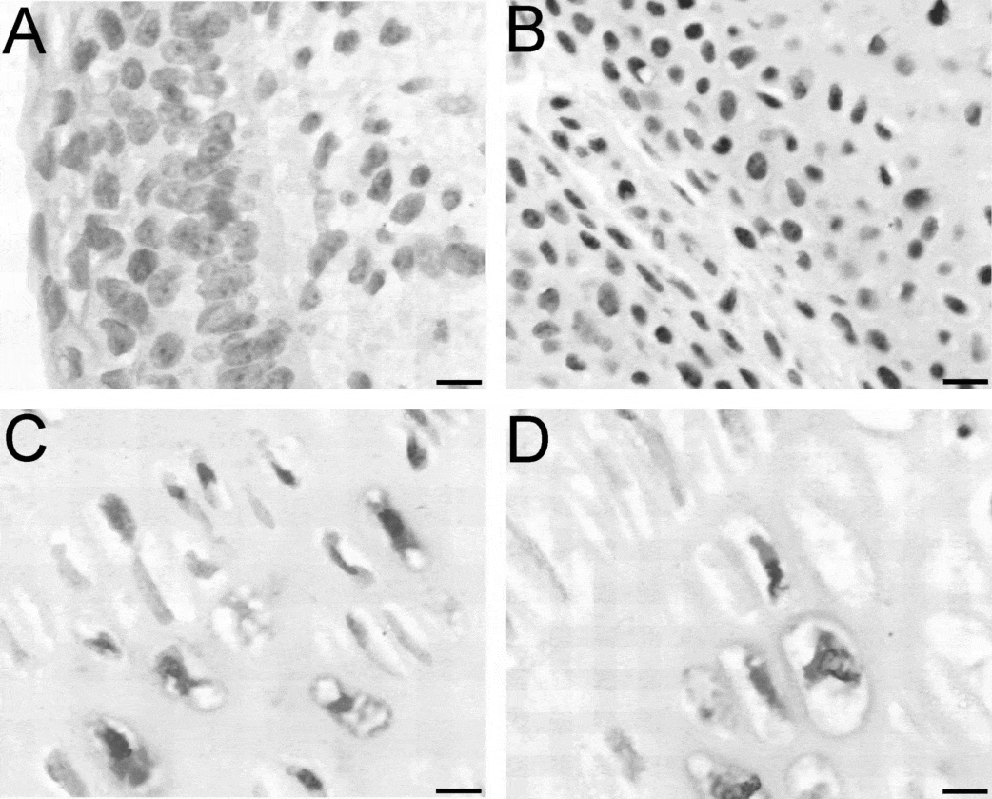The transport of glucose and glucose-derived compounds across the chondrocyte membrane is essential for chondrogenesis and the development of the skeletal system. Chondrocytes express multiple isoforms of the GLUT/SLC2A family of glucose transporters (Ohara et al. 2001; Shikhman et al. 2001; Mobasheri et al. 2002) including the recently identified GLUT9 (SLC2A9; Phay et al. 2000). This study reports the expression and localization of GLUT9 in ovine cartilage from various developmental stages.
Ovine embryos were obtained from killed pregnant ewes. All procedures were carried out strictly in accordance with current UK legislation. Animals were humanely killed by injection with 0.75 ml (kg body weight)-1 sodium pentobarbitone (Euthatal, Rh™ne Mérieux, 200 mg ml-1). Full-depth cartilage plugs were excised from the forelimbs of newborn and 2-year-old animals (abattoir material) using a cork borer. All tissues (including forelimbs of embryos) were fixed in neutral buffered formalin before decalcification in 10 % EDTA and immunohistochemistry. Antigen retrieval was performed in the microwave oven in the presence of 10 mM citrate buffer (pH 6.0) and endogenous alkaline phosphatase quenched by treatment with 1.25 mM levamisole. Non-specific protein binding sites were blocked by incubation with 10 % normal goat serum in phosphate buffered saline (PBS). Sections were probed with primary polyclonal antibodies to mouse GLUT9 and secondary goat anti-mouse IgG conjugated to alkaline phosphatase. Alkaline phosphatase active sites were revealed using Fast-Red TR/Naphthol AS-MX as precipitating agent. Sections were counterstained with haematoxylin and mounted in aqueous medium before examination by light microscopy.
The results revealed that GLUT9 is abundantly expressed in developing chondroblasts and chondrocytes in ovine embryos (Fig. 1) and in the superficial, middle and deep layers of developing ovine cartilage. Closer examination revealed that GLUT9 is present in an intracellular, perinuclear location in fetal, developing and adult chondrocytes. GLUT9 was also found in an intracellular location in the kidney, ileum and placenta. Articular cartilage is a poorly vascularized and highly glycolytic tissue that produces large quantities of lactic acid. This situation is further exacerbated by low oxygen tensions and ongoing anaerobic glycolysis by chondrocytes. Expression of multiple GLUT isoforms including GLUT1, GLUT3, GLUT4, GLUT9 and GLUT12 may be an important physiological and bioenergetic adaptation for chondrocytes in the extracellular matrix in developing cartilage (Macheda et al. 2002).

